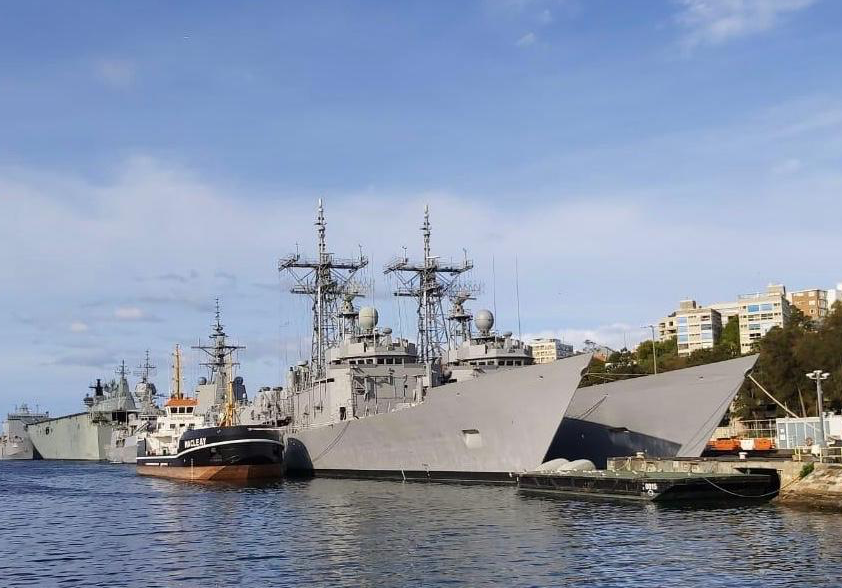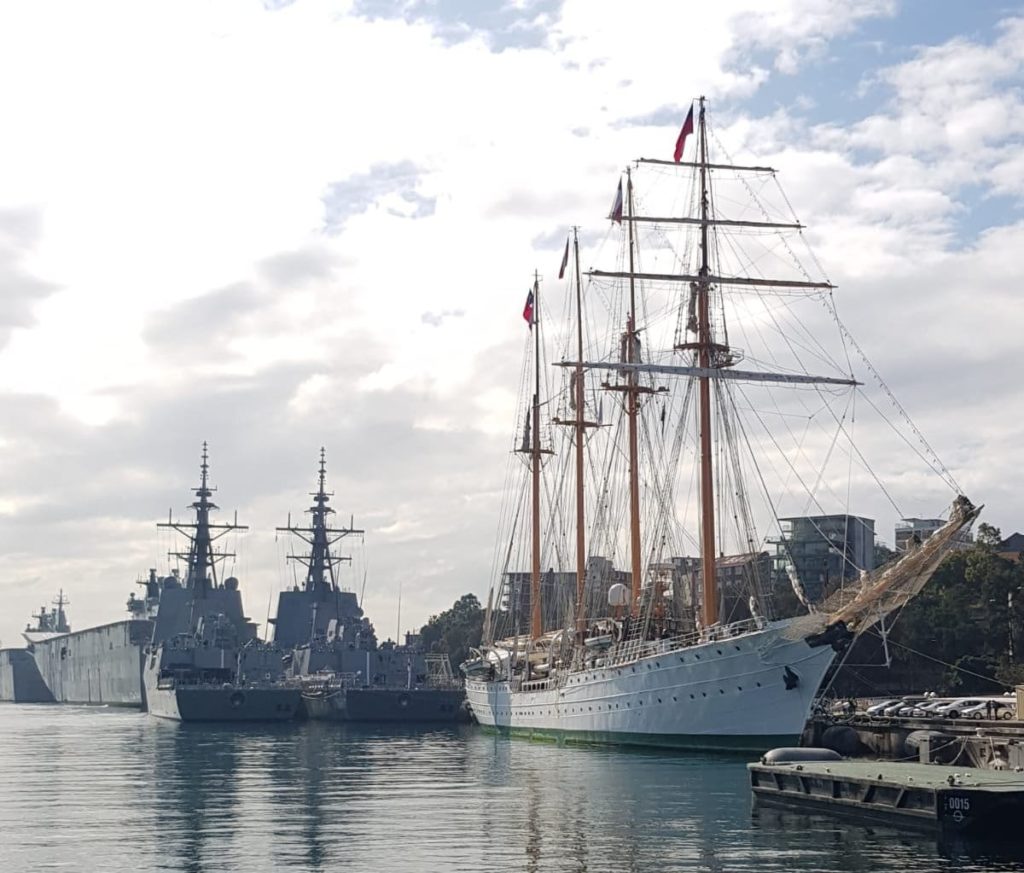
Beyond the obvious importance of the acquisition of two Australian frigates by the Chilean Navy, a more strategic aspect of this purchase is that it may be the first step in building a solid security relationship between two countries with common interests that have no restrictions to join one another in facing the challenges that the Pacific holds for them.
It is not just a simple buy and sell exchange between two British-origin ocean navies that have long worked in combined exercises such as RIMPAC, but the concrete rapprochement between two forces representing countries that share values, interests and geographic areas. These acquisitions, which were mentioned by “El Mercurio” newspaper on Sunday, 5 April, are the result of a long period of evaluations of a market for second-hand ships of limited supply and of approaches with different like-minded navies that enhance the international positioning of Chile, including the Australian Navy. The need for the renewal of “three frigates” had even been mentioned by the Chilean Defense Minister Alberto Espina on the pages of that same newspaper in July 2018 when visiting the Chilean forces participating in RIMPAC of Hawaii.
From a geopolitical point of view, Australia and Chile are two liberal democracies with open economies that depend on maritime trade to export raw materials and thus achieve prosperity. Both nations are also in a state of tension due to the reality that the United States is their main security partner and China is their main trading partner. In addition, the two have a natural projection toward the South Pacific and Antarctica, where they do not present overlapping claims — a situation very similar to that of New Zealand, which may be another logical factor in this equation.
Both Canberra and Santiago are already united through different types of regional Both Canberra and Santiago are already united through different types of regional entities such as the Asia-Pacific Economic Cooperation (APEC), the Pacific Islands Forum and the Western Pacific Naval Symposium. The approval of the Trans-Pacific Partnership Agreement (TPP-11) is still pending in Chile’s Congress, but it would undoubtedly be another space to consider.
In its 2016 Defense White Paper, Australia was very clear in establishing that the country “can better pursue its objectives of growth and prosperity and protect its interests” in the “region and globally by working with others, bilaterally, regionally and multilaterally. Defence’s international engagement —its physical footprint overseas and pattern of collaborative activities such as joint exercises and training— is an integral component of Defence’s posture”.

Chilean navy training ship “Esmeralda” in SydneyThe recent document “Seas of Chile: 2040 Vision”, prepared by the Chilean Ministry of Foreign Affairs’ Strategic Planning Division, established that “Chile must be a notably active player on the international stage of the Pacific Ocean in order to project a medium and long term view of its maritime relationship with the countries of the basin.” In this sense, deepening our relations with Australia is perfectly consistent in matters of security, thus joining the current economic links. On the other hand, international cooperation is already included within the Ministry of Defense’s five mission areas, and one that the Navy is very keen to develop because of Chile dependency on its maritime trade.
Regarding more operational aspects, there are many common challenges that the two nations share and that can enhance mutual learning and leverage capabilities. For example, there are the tasks regarding control of illegal fishing in the South Pacific; the eventual humanitarian assistance and disaster relief (HA/DR) missions in Polynesia in the face of tsunamis or natural disasters; the protection of maritime routes and key passages such as the Strait of Malacca (both countries direct their trade to Asia); the fight against forest fires in the same season of the year; and scientific research on climate change (where the construction of our Antarctic ship and the scientific ship “Cabo de Hornos” can open up many instances of cooperation).
In strictly tactical terms, the Australian frigates, whose design is based on the U.S.’ Oliver Hazard Perry-class frigates, come to maintain the anti-aircraft capabilities that we will soon lose due to the obsolescence of the Standard Missile-1 (SM-1) and the fact that the Dutch class-L frigates from the fleet are soon to be decommissioned. The fact that Australian ships come equipped with the SM-2 (which by the way has a greater effective range than its predecessor), necessarily implies that Chilean crews have to carry out training and maintain an operational connection with their Australian peers, which will bring the two Navies together. All this, as has been proven with the Royal Navy over and over time, generates a good friendship based on an operational and logistical relationship. It should be added that the Royal Australian Navy is going through the greatest fleet renewal process since World War II, and its currently ongoing shipbuilding program may be an interesting model to observe, given the Chilean Navy’s current need for frigates and submarines renewal.
It is also worth mentioning that when it comes to the other services, both countries’ respective armies employ the same command-and-control system (Torch), and that their air forces mostly utilize U.S. aircraft.
Sailing in formation in the turbulent waters of the 21st century, where crucial decisions must be made about the providers of the 5G network or the laying of submarine data cables, is a good way to assume responsibilities on behalf of countries that seek to manage their regions independent of disputes between the great powers.
The acquisition of two frigates may be the tangible step needed toward creating a new strategic security alliance for Australia and Chile, to take over the vast maritime space linking the two countries through the South Pacific and the Antarctic. Why not think about it seriously and move ahead with an idea that only has benefits and no costs for the Australian and Chilean people.
Juan Pablo Toro
Executive Director
AthenaLab
7 April 2020
Temas relevantes


No te pierdas ninguna actualización
Suscríbete a nuestro newsletter de forma gratuita para mantenerte informado de nuestros lanzamientos y actividades.
Suscribirse









